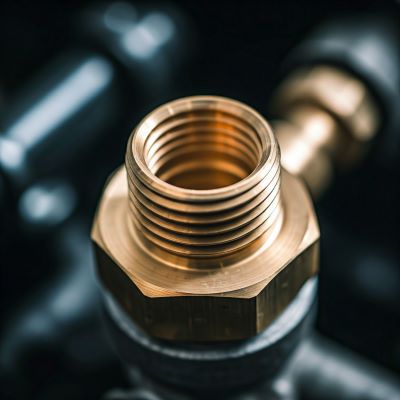The automotive industry thrives on precision. From the intricate workings of an engine to the seamless integration of body panels, accurate fitting is paramount for optimal performance, safety, and longevity.
This blog post will delve into the crucial aspects of automotive fitting, providing valuable insights for technicians, mechanics, and enthusiasts alike.
The Importance of Precision in Automotive Fitting
Precise fitting ensures:
➡️ Optimal Vehicle Performance:
➡ Enhanced engine efficiency and reduced fuel consumption
➡ Improved aerodynamics and handling
➡ Smoother operation and reduced vibrations
➡️ Enhanced Safety:
➡ Proper functioning of safety systems like airbags and seatbelts
➡ Reduced risk of component failure and accidents
➡ Improved vehicle stability and control
What is Automotive Fitting and Why it Matters
Automotive fitting involves the precise assembly and integration of various components within a vehicle. This encompasses a wide range of tasks, including:
➡️ Installing engine parts
➡️ Assembling suspension systems
➡️ Fitting body panels and trim
➡️ Aligning wheels and tires
Accurate fitting is crucial for:
➡️ Ensuring proper component function: Each part must fit correctly to perform its intended role.
➡️ Maintaining vehicle integrity: Precise fitting prevents leaks, vibrations, and structural weaknesses.
➡️ Achieving optimal performance and safety: As mentioned earlier, accurate fitting directly impacts vehicle performance and driver safety.
Key Components Involved in Automotive Fitting Processes
➡️ Engine Components: Pistons, cylinders, connecting rods, valves, etc.
➡️ Suspension Components: Shocks, struts, springs, control arms, etc.
➡️ Body Panels: Hoods, doors, fenders, bumpers, etc.
➡️ Interior Components: Dashboards, seats, consoles, etc.
Must-Have Tools for Automotive Fitting
➡️ Measuring Tools:
➡ Micrometers
➡ Calipers
➡ Measuring tapes
➡ Angle finders
➡️ Hand Tools:
➡ Wrenches
➡ Sockets
➡ Screwdrivers
➡ Pliers
➡️ Power Tools:
➡ Impact wrenches
➡ Drills
➡ Grinders
➡ Sanders
Innovative Equipment to Enhance Accuracy
➡️ Laser Alignment Systems: For precise wheel alignment and suspension adjustments.
➡️ Digital Measuring Tools: For increased accuracy and data recording.
➡️ 3D Printing Technology: For creating custom-fit components.
Maintenance Tips for Keeping Tools in Top Condition
➡️ Regular Cleaning: Remove debris and dirt to prevent damage.
➡️ Proper Storage: Keep tools organized and protected from damage.
➡️ Regular Calibration: Ensure accuracy of measuring tools.
➡️ Proper Lubrication: Keep moving parts of tools lubricated for smooth operation.
Inspecting and Preparing Vehicle Components
➡️ Thoroughly inspect components for any damage or defects.
➡️ Clean components to remove dirt, grease, and other contaminants.
➡️ Ensure all surfaces are clean and dry before fitting.
Creating a Safe and Organized Workspace
➡️ Maintain a clean and clutter-free workspace.
➡️ Use proper lighting and ventilation.
➡️ Ensure all safety equipment is readily available.
Choosing the Right Materials for the Job
➡️ Select the appropriate fasteners and adhesives for each application.
➡️ Use high-quality materials to ensure durability and performance.
Techniques for Achieving Precision
Step-by-Step Guide to Measuring and Marking
1. Accurate Measurement: Use the appropriate measuring tools to obtain precise dimensions.
2. Clear Marking: Use a sharp marker to clearly indicate cut lines and alignment points.
3. Double-Check Measurements: Always double-check measurements to avoid errors.
Proper Alignment: Tips for Perfect Fit Every Time
➡️ Use alignment tools and fixtures whenever possible.
➡️ Check for alignment at multiple points during the fitting process.
➡️ Make adjustments as needed to ensure proper fit and function.
Advanced Techniques for Complex Fitting Scenarios
➡️ Utilizing jigs and fixtures: To ensure consistent and accurate alignment.
➡️ Employing advanced measuring techniques: Such as laser scanning and 3D modeling.
➡️ Seeking expert advice: Consult with experienced technicians or engineers for complex projects.
Common Challenges in Automotive Fitting
Identifying and Resolving Alignment Issues
➡️ Conduct thorough inspections for misalignment.
➡️ Use diagnostic tools to pinpoint the source of alignment problems.
➡️ Make necessary adjustments to correct alignment issues.
How to Avoid Material Damage During Fitting
➡️ Use appropriate tools and techniques to prevent damage.
➡️ Exercise caution when handling delicate components.
➡️ Use protective covers and padding to prevent scratches and dents.
Overcoming Mistakes with Quick Fixes
➡️ Identify and correct minor mistakes promptly.
➡️ Utilize quick fixes such as shims or fillers for minor alignment issues.
➡️ Avoid attempting major repairs without proper expertise.
Check out these resources for your gain ⬇️⬇️⬇️
BSPT Thread Standard What Makes It Unique
UNC Threads Versus Others Which Is Best for You
Best Practices for Consistency and Accuracy
The Role of Testing and Adjustments
➡️ Conduct thorough testing after each fitting step.
➡️ Make necessary adjustments based on testing results.
➡️ Perform final tests to ensure proper vehicle function.
Developing a Routine for Precision Work
➡️ Establish a consistent workflow for each fitting task.
➡️ Follow a checklist to ensure all steps are completed accurately.
➡️ Maintain a log of all work performed.
Training and Skill Development for Long-Term Success
➡️ Invest in ongoing training and skill development for technicians.
➡️ Encourage continuous learning and skill improvement.
➡️ Stay updated on the latest industry best practices and technologies.
Conclusion
By following these tips and best practices, automotive technicians can significantly enhance the accuracy and efficiency of their fitting processes. Precision is not just a matter of aesthetics; it is crucial for vehicle safety, performance, and longevity.
By embracing a commitment to accuracy and continuous improvement, professionals can ensure that every vehicle they work on is assembled to the highest standards.
Post time: Jan-20-2025


